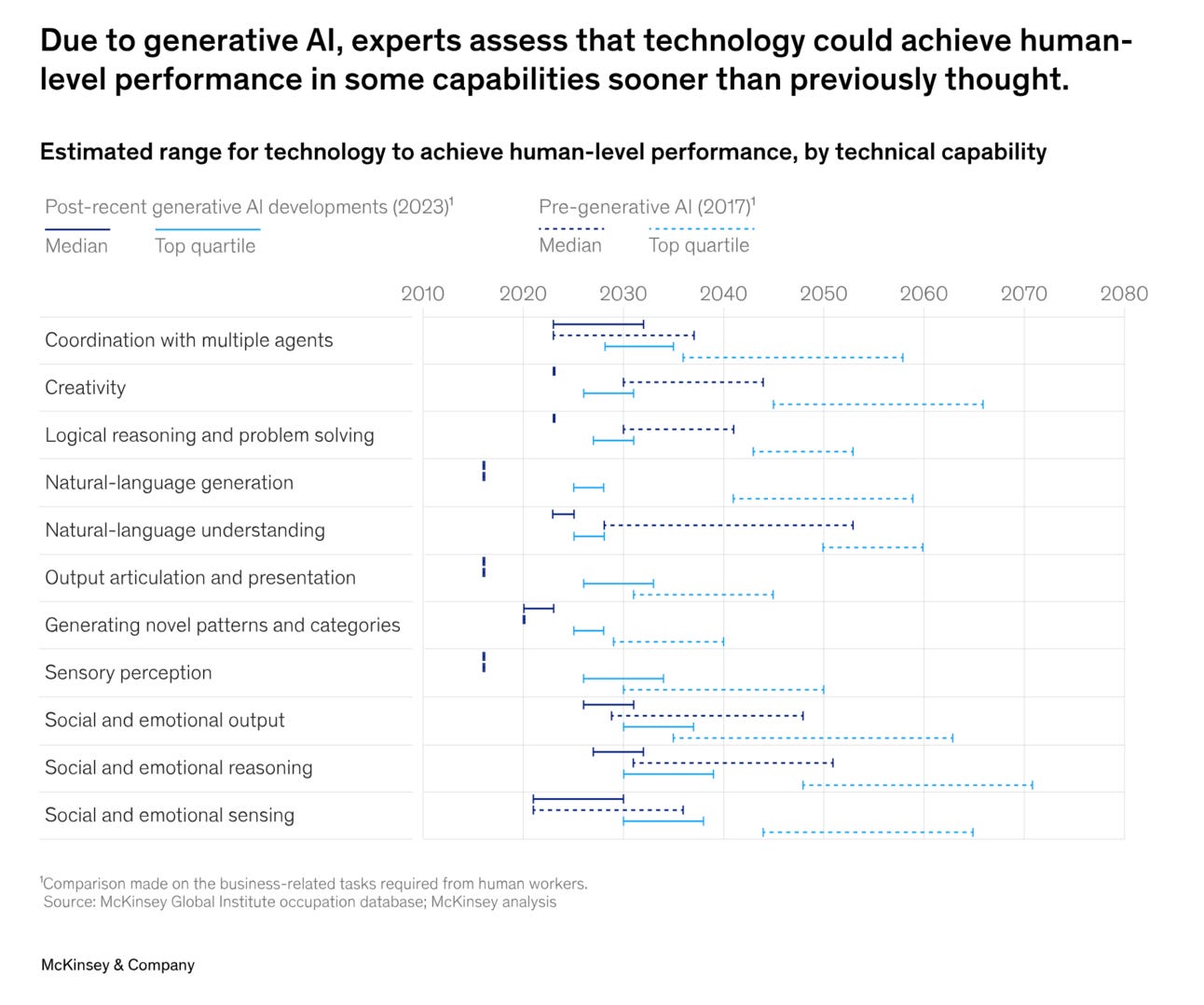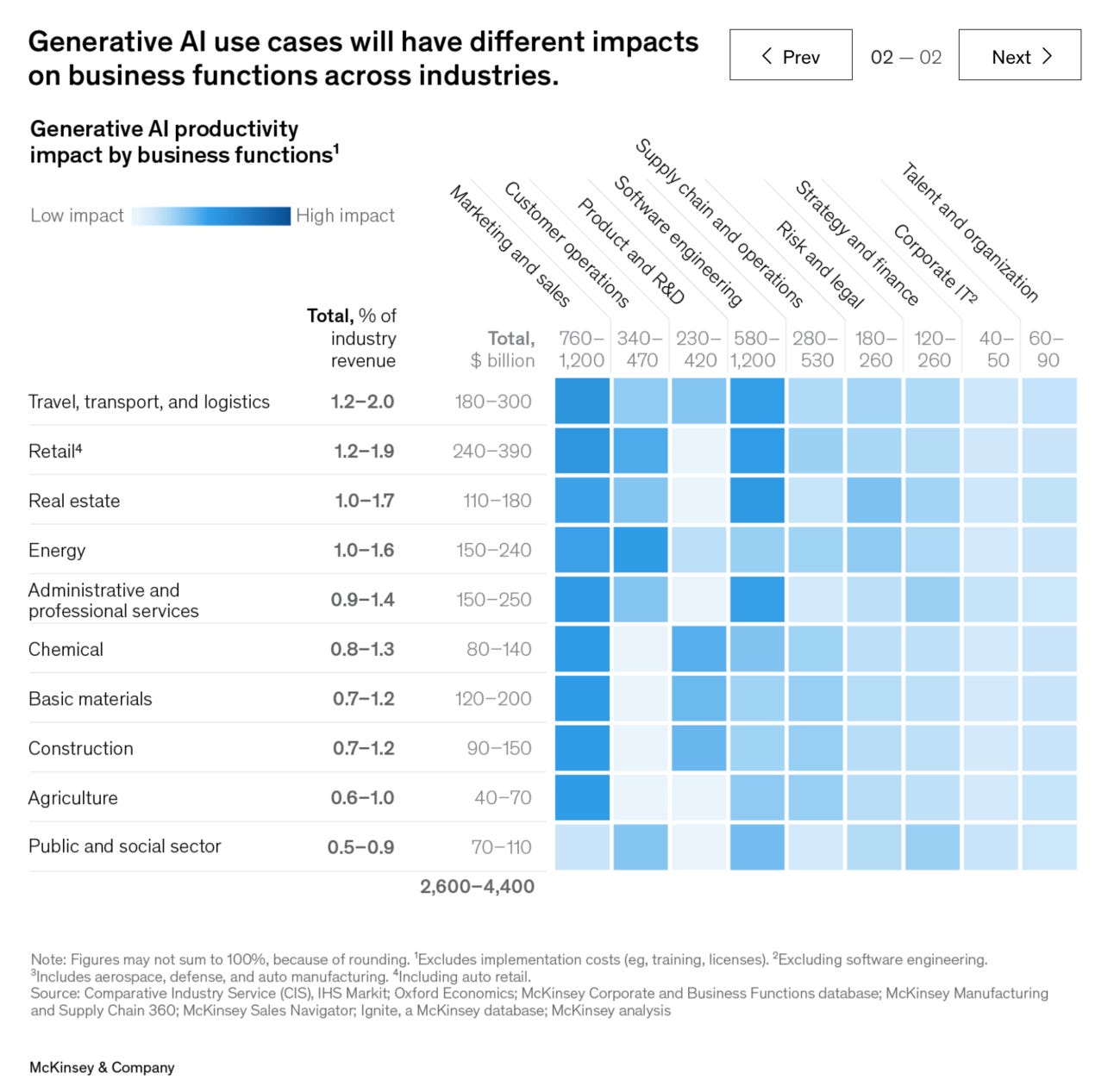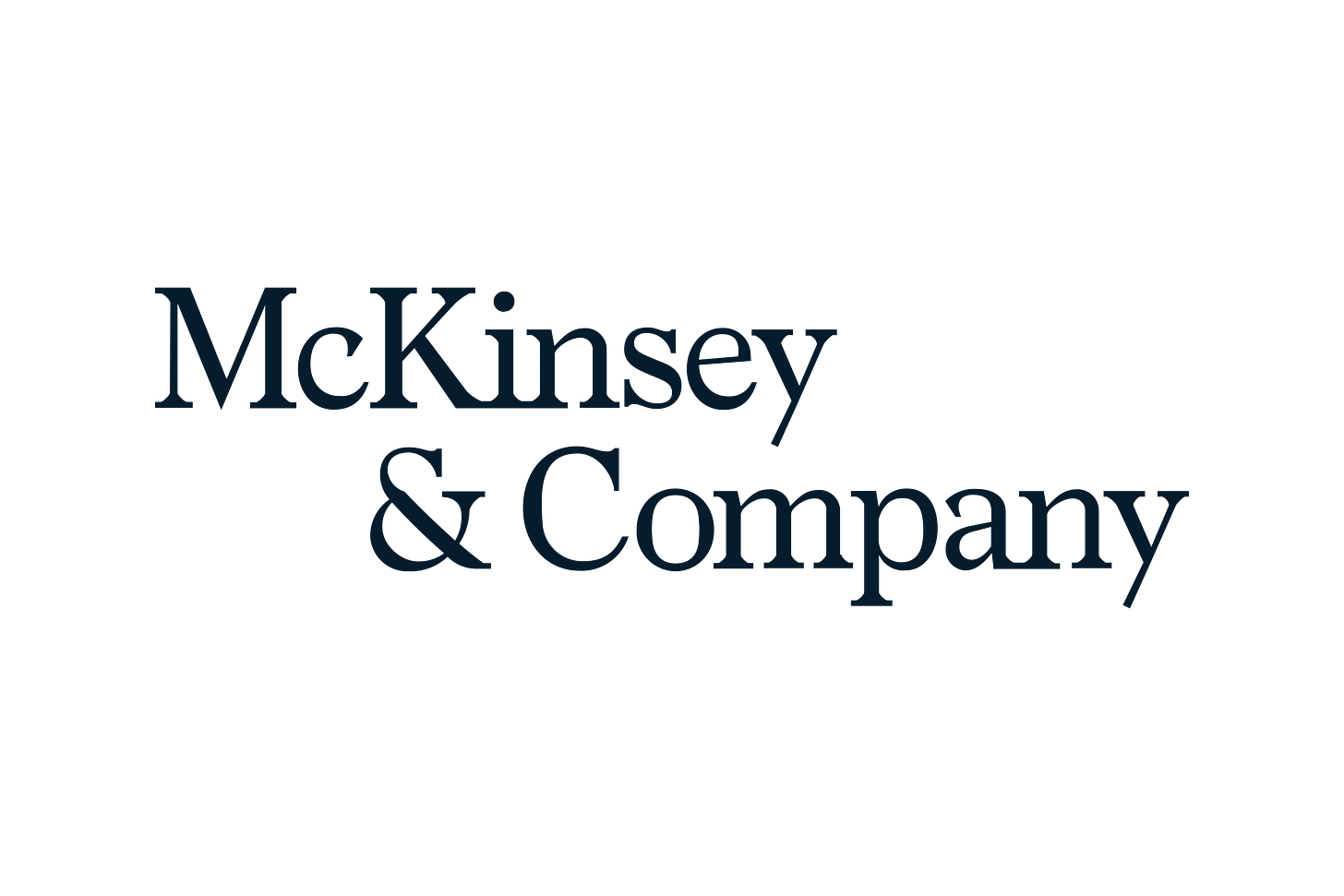McKinsey on: Generative AI
What every CEO should know about generative AI; The economic potential of generative AI
Read time: 3 min
Big Idea
Generative AI can significantly boost productivity and value across multiple business functions—customer operations, marketing and sales, software engineering, and product R&D—by automating tasks up to 70%, enhancing decision-making, and enabling more personalized and efficient services, although careful implementation with higher-wage knowledge work is critical.
Valuable Visuals
Top Thoughts
Generative AI could contribute $2.6-$4.4 trillion to the global economy annually. This has significant implications for corporate strategy, as investing in generative AI could potentially yield high returns and competitive advantages.
About 75% of the value that generative AI could deliver is concentrated in four areas: Customer Operations, Marketing and Sales, Software Engineering, and R&D. Executives should consider prioritizing investments and pilot projects in these functions to maximize the impact of generative AI on their organizations.
Generative AI has the potential to automate tasks that take up 60 to 70% of employees' time, particularly in knowledge-intensive roles that have higher wages and educational requirements. Corporate leaders need to plan for reskilling and workforce transition strategies to adapt to this rapidly changing landscape.
Generative AI is not just about automation but also about augmenting human capabilities. In tasks ranging from customer service to R&D, AI serves as a collaborator that can enhance human performance, enabling employees to focus on higher-impact tasks.
While the potential benefits are considerable, there are risks involved, such as intellectual property infringement in marketing or biased outputs. Executives should be aware that implementing AI solutions requires careful planning, including ethical considerations and ongoing human oversight, to ensure that the technology aligns with corporate goals and values.
As with any technological advancement, there are challenges to be mindful of. The need for new quality checks, potential security vulnerabilities (adversarial attacks), and the differentiation between AI-generated content and factual information are all areas of concern. Ensuring that humans remain part of the process and that privacy and security are prioritized is essential for successful implementation.
Quick Quotes
"Based on our estimates, the automation of individual work activities enabled by these technologies could provide the global economy with an annual productivity boost of 0.2 to 3.3 percent from 2023 to 2040, depending on the rate of automation adoption—with generative AI contributing 0.1 to 0.6 percentage points of that growth."
"Generative AI has the potential to change the anatomy of work, augmenting the capabilities of individual workers by automating some of their individual activities."
"As a result of these reassessments of technology capabilities due to generative AI, the total percentage of hours that could theoretically be automated by integrating technologies that exist today has increased from about 50 percent to 60–70 percent."
"Our estimate of the technical potential to automate the application of expertise jumped 34 percentage points, while the potential to automate management and develop talent increased from 16 percent in 2017 to 49 percent in 2023."
"Generative AI could still be described as skill-biased technological change, but with a different, perhaps more granular, description of skills that are more likely to be replaced than complemented by the activities that machines can do."
"We estimate that applying generative AI to customer care functions could increase productivity at a value ranging from 30 to 45 percent of current function costs."
"According to our analysis, the direct impact of AI on the productivity of software engineering could range from 20 to 45 percent of current annual spending on the function."
Actionable Advice
Prioritize Investment in Key Functional Areas: about 75% of the value from generative AI is expected to be concentrated in Customer Operations, Marketing and Sales, Software Engineering, and R&D. Corporate executives should prioritize investing in these areas, starting with pilot projects to explore the specific ways generative AI can boost productivity and value.
Workforce Reskilling and Transition Planning: Given that generative AI could automate tasks consuming 60 to 70% of employees' time, particularly in knowledge-intensive roles, executives should proactively develop workforce transition and reskilling strategies. This will help companies adapt to the new technological landscape while maintaining employee engagement and organizational effectiveness.
Investing in Generative AI for Customer Care Functions: With a productivity increase of 30 to 45 percent in customer care by implementing generative AI, executives should seriously consider piloting AI initiatives within their customer service departments.
Allocate Resources to AI-Driven R&D: Corporate executives should allocate resources to explore the implementation of AI in their R&D departments, focusing on innovation and product development that could potentially disrupt the market.
Invest in Identifying and Implementing Use Cases: Executives should immediately invest in research and development to identify specific use-cases where generative AI could deliver the most value in their industry—whether it's customer interactions, back-office operations, or software development.
Source(s)
Chui, M., Roberts, R., Rodchenko, T., Singla, A., Sukharevsky, A., Yee, L., & Zurkiya, D. (2023, May 12). What every CEO should know about generative AI. McKinsey & Company. (Link)
Chui, M., Hazan, E., Roberts, R., Singla, A., Smaje, K., Sukharevsky, A., Yee, L., & Zemmel, R. (2023, June 14). The economic potential of generative AI: The next productivity frontier. McKinsey & Company. (Link)
Chui, M., Hazan, E., Roberts, R., Rodchenko, T., Singla, A., Smaje, K., Sukharevsky, A., Yee, L., & Zemmel, R. (2023, August 25). What’s the future of generative AI? An early view in 15 charts. McKinsey & Company. (Link)







